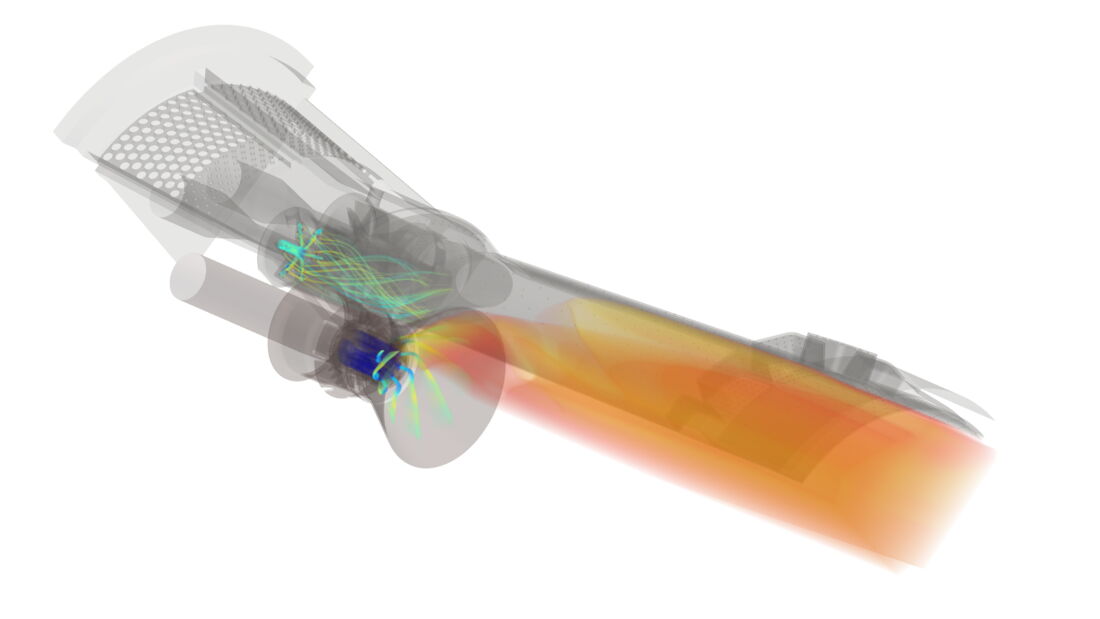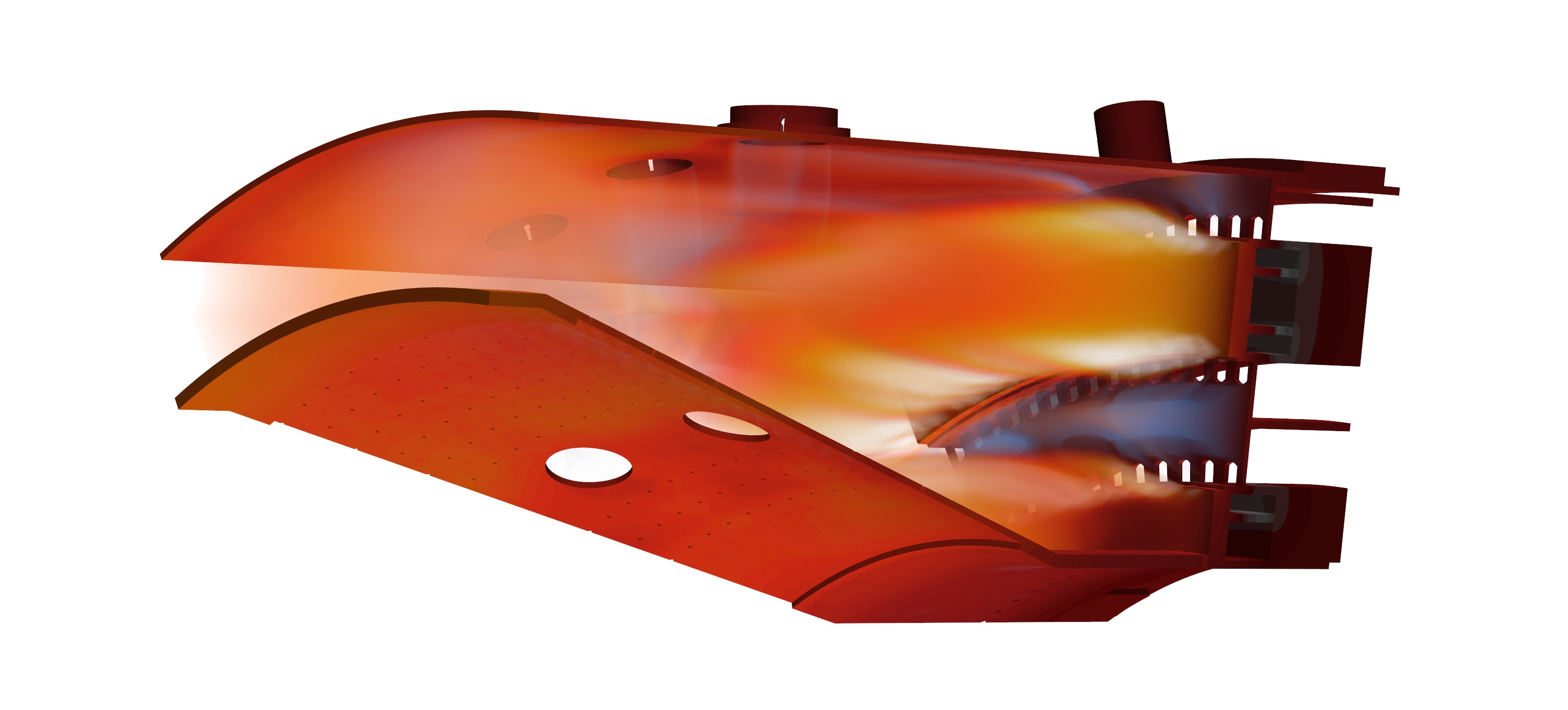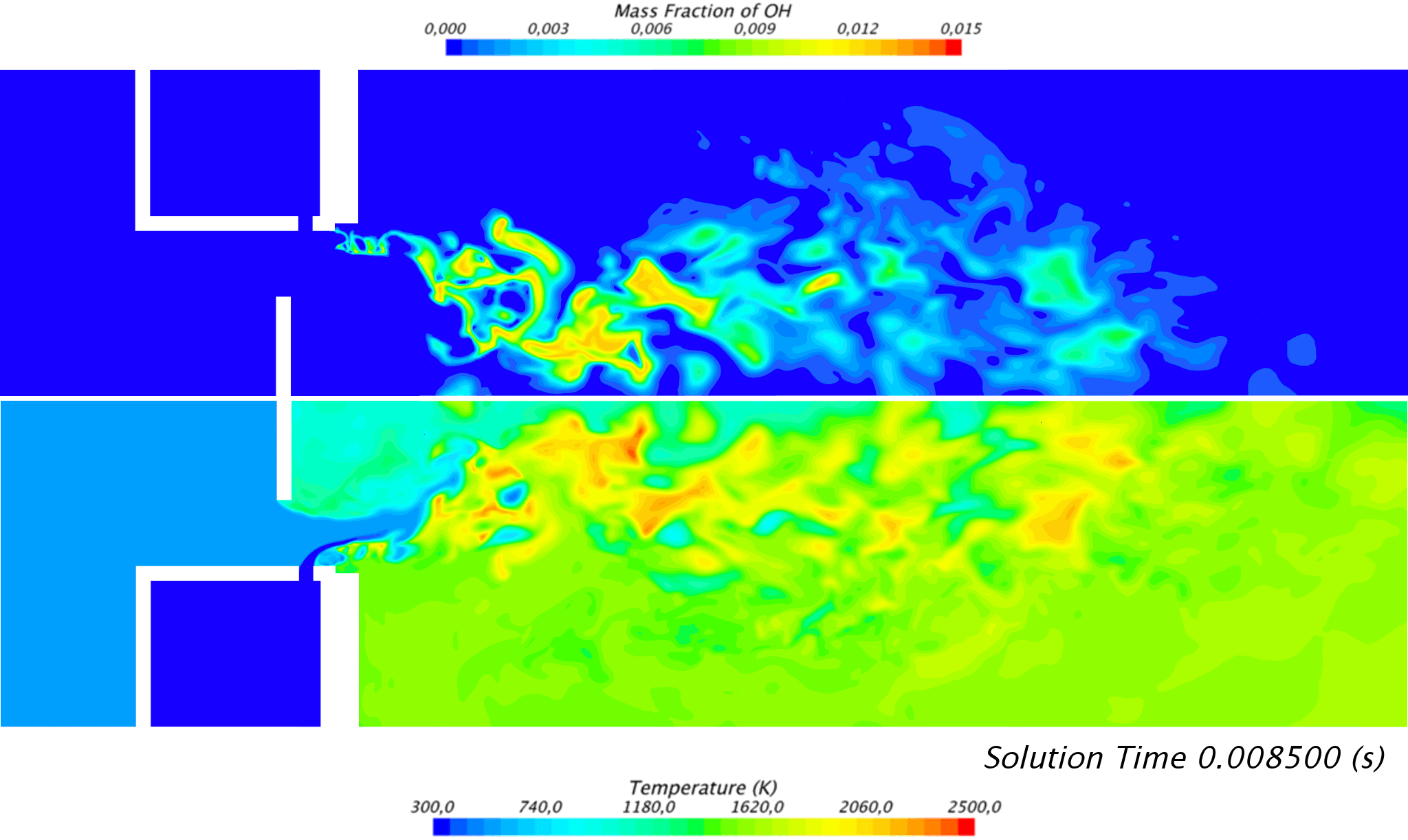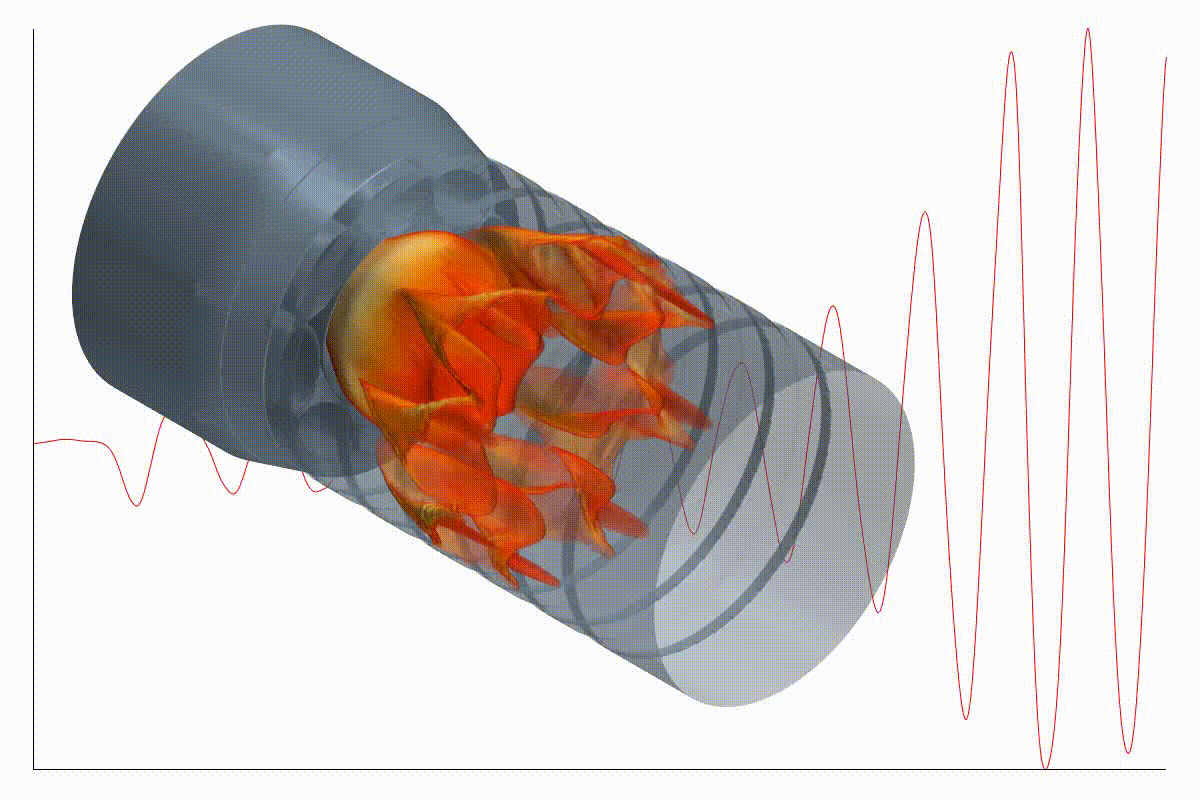Combustion Simulation
B&B-AGEMA engineers are well experienced in performing detailed simulations for a variety of combustion processes. Regardless of the type of combustion (diffusion type or pre-mixed) or the type of fuel (from pure gaseous fuels over arbitrary gas compositions to liquid fuels), B&B-AGEMA can carry out detailed numerical investigations on single flames or holistic analyses of complex combustion chamber geometries.
Combustion simulations have to capture the complex interaction of flow and chemistry with good accuracy and likewise limit the computational effort to a reasonable level. Therefore, special attention is required to the reaction kinetics. Depending on the analysis case B&B-AGEMA engineers select a suitable simulation approach from a pool of reaction mechanisms and combustion models.
The combustion simulation spectrum at B&B-AGEMA comprises the following disciplines.
- Steady (RANS) or unsteady (URANS or LES) 3D Computational Fluid Dynamics coupled with
- Combustion modelling
- Complex chemistry approach (combined solving of chemical reactions and transport equations for the single species in the considered reaction mechanism)
- Flamelet approach (turbulent flame is approximated by ensemble of laminar flames, reaction chemistry is pre-calculated, solving a reduced set of variables)
- Exhaust gas and pollutant formation as e.g. NOx and CO formation
Emissions and flame stability are the most important aspects in the simulation, analysis and optimization of combustion processes, whether for newly designed or existing combustor geometries. Especially the simulation-based design of lean-premixed combustors, which is the state-of-the art combustor type for DLN gas turbine combustors to reduce NOx emissions, can represent a challenging task as this type of combustion process tends to be instable and therefore is likely to generate thermoacoustic oscillations. Such oscillations lead to acoustic noise (humming or screech) and might ultimately result in significant component damage. B&B-AGEMA uses the in-house 1D network tool “Combustor Stability Code” (CSC) to predict thermoacoustic oscillations for given combustor geometries at an early development stage with significantly reduced computational effort (compared to e.g. LES).
In addition, B&B-AGEMA has extensive experience in designing sophisticated cooling solutions for hot gas components, especially for turbine vanes and blades. This knowledge is used to develop suitable and efficient cooling approaches for combustors as well. By combining heat transfer and combustion chemistry to “reacting CHT simulations” local hot spots on combustor parts like flame tubes or transition piece can be immediately identified. The impact of possible thermal barrier coatings can also be numerically assessed.




